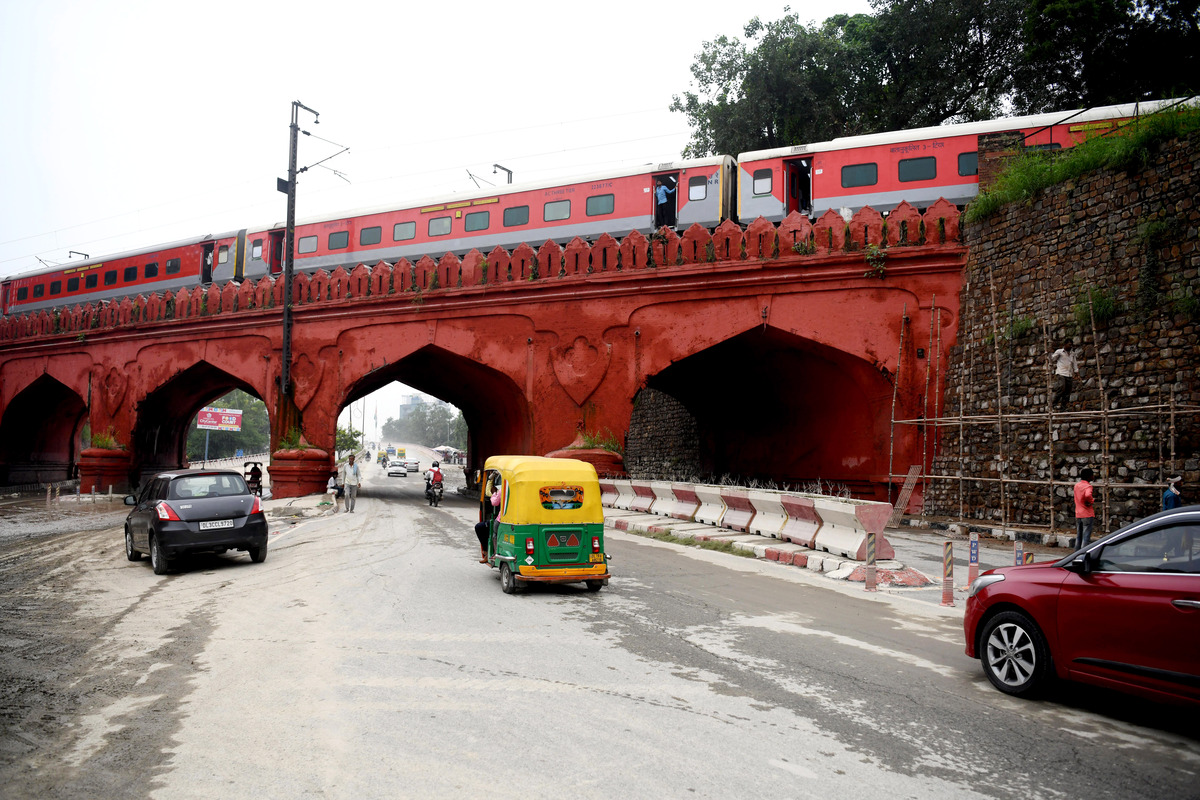Rahul Gandhi misses Delhi rally citing health concerns
Leader of Opposition in the Lok Sabha, Rahul Gandhi, on Wednesday skipped a rally scheduled to be addressed by him in the capital for the forthcoming Assembly elections due to health issues.
The road remained suspended due to severe waterlogging for six days as flood water was spilled all over the Ring Road in the backyard of Red Fort since July 13, as the Yamuna continued to flow above danger level.

Commuters ply on a road located at the backside of the Red Fort (ANI Photo)
Days after the entire area was inundated by the flood water of overflowing Yamuna, traffic on the road near the Red Fort in the national capital is back to normal.
For the last six days, vehicular movement on the road near the Red Fort remained suspended due to severe waterlogging as flood water was spilled all over the Ring Road in the backyard of Red Fort since July 13, as the Yamuna continued to flow above danger level.
Advertisement
On Wednesday, the water level in the river once again crossed the danger mark, reaching 205.35 meters. It was recorded above the danger level at 7 am in the morning. An hour later, the water level reached 205.48 meters. The current water level in the Yamuna is 15 cm above the danger mark. Officials are expecting an increase in the volume due to the current rain in the hilly areas.
Advertisement
At 8 pm on Tuesday, the water level in the Yamuna was recorded at 205.3 meters, slightly below the danger level. However, due to continuous rain in the hilly areas, it increased again and crossed the danger mark.
A “slight rise” was recorded in the river’s water level on Monday due to rains that lashed some areas of Haryana.
As the situation is gradually getting back on track in Delhi, the state government has lifted the ban on entry of heavy vehicles into the national capital, effective from Wednesday.
“Considering the improvement in the flood situation and descending water level of Yamuna River, it has been decided by the competent authorities to withdraw all the restrictions imposed as per the orders on July 13th and 17th with effect from July 19th,” read an official statement.
Earlier on July 13, the entry of heavy vehicles into Delhi was restricted from the Singhu border, Badarpur border, Loni border and Chilla border owing to waterlogging through an order. However, heavy vehicles carrying food items and essentials were excluded from it.
However, several areas of the national capital are still grappling with the problem of waterlogging. Visuals showed the areas near Rajghat reeling under water early on Wednesday.
Considering the prevailing situation, the National Disaster Response Force (NDRF) has deployed 17 teams for rescue work in flood-affected districts of Delhi. 1,606 people have been rescued. Moreover, 7,241 people and 956 livestock have been evacuated by the NDRF teams. Further, pre-hospital treatment has been given to 908 rescued persons.
Around 26,401 people have been evacuated from the flood-affected low-lying areas of six districts of Delhi, out of which around 21,504 people are staying in 44 camps (including temporary relief camps as well as Pucca Buildings like schools, community centres). The rest of the evacuated people have shifted to the places of their choice like their relatives’ houses or rented accommodations.
The Yamuna broke a 45-year-old record and reached its highest level at 208.65 meters on July 13. As a result of the flood in Delhi, several low-lying areas were submerged, and many roads were flooded. The river in Delhi crossed the danger mark at 5 pm on July 10.
Advertisement